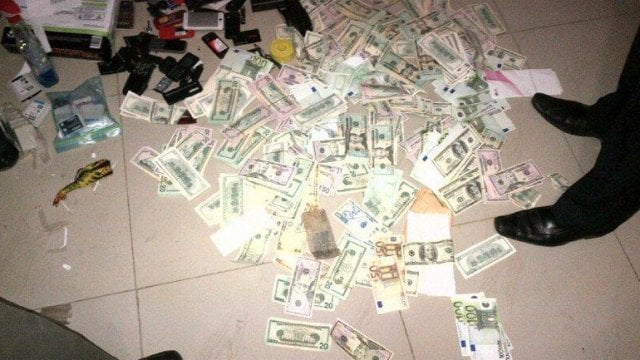
10 of the Biggest Counterfeit Money Stories of 2015
According to a March 11, 2015 Secret Service estimate, 0.25% of money that is currently in circulation is counterfeit – and with $1.36 trillion in U.S. dollars circulating worldwide, that means as much as $3.4 billion could be counterfeit.
The main purpose of the Secret Service - established by Abraham Lincoln in 1865 - was not, somewhat ironically, to provide protection for the President, but to find and stop counterfeit currency from circulating around the country. At the time the Secret Service was established, an estimated 33%-50% of all U.S. currency in circulation was counterfeit. Thanks to updated security features on U.S. currency as well as strict regulations on machinery capable of producing currency, the prevalence of counterfeit money in circulation has been drastically reduced.
Although the ability to successfully counterfeit bills has been inhibited compared to a hundred years ago, there is still quite a lot of counterfeit money in circulation (as mentioned above), especially in foreign countries due to lax regulations surrounding currency production machinery and the high-margins counterfeit currency is capable of pulling in, particularly in poorer countries.
The following is a list of the 10 biggest counterfeit money stores from 2015.
1.
How much was counterfeited? $1.1 million; in addition, €2.3 million and $11 million in Colombian Pesos (which is approximately $3,600 in US dollars) were also counterfeited
Where? Bogota, Colombia
When? September 5, 2015
Who? 5 Colombian nationals, whose names were not released, were arrested
How? Colombia’s national police, the US Secret Service, and Europol all came together to arrest the 5 counterfeiters. Printers, paper, ink, and security threads used in currency production were also found with the counterfeit money.
Sources:
• http://citizndaily.com/news/world-news/colombia-counterfeiting-raid-5-arrested-as-authorities-seize-millions-in-fake-euros-dollars-and-pesos-in-bogota/
• http://www.ibtimes.com/colombia-counterfeiting-raid-5-arrested-authorities-seize-millions-fake-euros-dollars-2084532
2.
How much was counterfeited? $1.5 million
Where? Lima, Peru
When? April 15, 2015
Who?4 suspects, whose names were not released, were arrested
How?The US Secret Service along with Peruvian authorities uncovered a little over $1.5 million in counterfeit bills, along with counterfeit euros, Venezuelan bolivares fuertes, and Chilean pesos. Further details about this case has not been released, other than a picture of the seized counterfeit cash that the US Secret Service tweeted from their Twitter account:
4/10/2015: USSS & Peruvian authorities seized over $1.5 million in counterfeit U.S. currency and arrested 4 suspects pic.twitter.com/1BkRLyKPpZ
— U.S. Secret Service (@SecretService) April 15, 2015
Sources:
• http://www.businessinsider.com/heres-what-more-than-15-million-worth-of-counterfeit-money-looks-like-2015-4
• https://twitter.com/SecretService/status/588464838046650368
3.
How much was counterfeited? $2 million
Where? Chandler, Arizona
When? March 12, 2015 & June 16, 2015
Who? Garbis Aram Krajekian, 40
How? For almost a decade, Krajekian managed to put over $2 million in counterfeit bills into circulation. He made the counterfeit money, mostly $100 bills, in both his garage and a small rental facility that housed a printing press he built himself. He would then spend the money at various stores in malls, buying about $10 worth of items, typically gift cards, which would allow him to receive about $90 in real currency as change. Krajekian was able to evade authorities for so long because he fine-tuned his designs and security features when needed.On March 12, 2015, Krajekian was indicted on 1 count of conspiracy, 1 count of laundering monetary instruments, and 21 counts of uttering counterfeit obligations or securities (in other words, intentional fraud), and on June 16, 2015, he was sentenced to 41 months in prison.
Sources:
• http://www.azcentral.com/story/news/2015/06/10/chandler-counterfeit-garbis-krajekian-abrk/71043258/
• http://www.justice.gov/sites/default/files/usao-az/pages/attachments/2015/03/12/us_v_krajekian_indictment.pdf
4.
How much was counterfeited? $2 million
Where? Kampala, Uganda & Pittsburg, Pennsylvania
When? April 2, 2015 & December 10, 2015
Who? Ryan Andrew Gustafson, 28
How? Gustafson was born in Montana, but spent most of his life in Africa, where his parents are missionaries, which allowed him to set up his counterfeit money scheme in Uganda. From December 2013 to December 2014, Gustafson led a counterfeit money scheme that was responsible for manufacturing $2 million in counterfeit bills. Although most of the counterfeit money was circulated in Uganda, it is estimated that about $270,000 reached the United States. He found buyers in Pennsylvania, Florida, Minnesota, Texas, and Washington for his counterfeit bills.Authorities were tipped off to his scheme in December of 2014 when bank employees discovered one of his fake bills and handed it over to investigators. Gustafson, who was living in Uganda at the time, was arrested there and deported back to the US last month. During a search of his Uganda residence, officials also uncovered counterfeit Ugandan currency, Ghanaian currency, Congolese currency, Indian currency, and euros.Gustafson was indicted on conspiracy and counterfeiting charges on April 2, 2015. He was arraigned in Pittsburg – where he counterfeit bills were initially discovered - on December 10, 2015 and pled ‘not guilty’; about $30,000 of his counterfeit bills had passed through the Pittsburg area alone.

Sources:
• http://www.theguardian.com/world/2015/dec/03/uganda-deport-american-counterfeit-money-operation
• http://www.justice.gov/usao-wdpa/pr/four-charged-international-uganda-based-cyber-counterfeiting-scheme
5.
How much was counterfeited? $4.7 million
Where? Jacksonville, Florida & Fort Lauderdale, Florida
When? June 5, 2015 & November 5, 2015
Who? Jean Phineas Losier, 41
How? Losier, who came to the US at the age of 3 from Port Au Prince, Haiti, started manufacturing counterfeit currency in late 2008. He was so good at producing passable counterfeit bills - thanks to his artistic background in painting - that, according to a prosecutor, on several occasions Losier had delivered counterfeit bills with ink that had not yet dried.Federal agents first caught onto his scheme in April 2010, when several of his counterfeit bills were discovered at various stores in the Jacksonville area. After spending 4 years surveilling and gathering evidence against Losier, the Secret Service executed a search warrant on Losier’s Wellington, Florida apartment on January 14, 2014, where he had been producing the counterfeit money; Losier was also arrested at this time. Federal agents uncovered genuine US $1 bills, chemicals used for bleaching ink off of genuine bills, molds and templates for bills, and custom-etched watermark molds. Although Losier employed, Mercury Thompson, 39, of Del Ray Beach, Florida, to sell and distribute the counterfeit bills, Losier alone had manufactured all the counterfeit bills.Losier manufactured such high-quality counterfeit bills by stripping the ink off of genuine $1 bills and printing the features of the $50 bill or the $100 bill using an elaborate bleaching and re-printing process. The Secret Service estimates that Losier managed to put about $4.7 million in counterfeit bills into circulation - $3.5 million of which circulated through the Southern and Middle Districts of Florida alone.On June 5, 2015, Losier was convicted on the count of conspiracy to deal in counterfeit Federal Reserve notes in the Middle District of Florida. After being sentenced to five years in prison on October 5, 2015, Losier was transferred to the Southern District of Florida to face another count of making counterfeit currency, to which he pled guilty on November 5, 2015, and is currently awaiting sentencing.
Losier posing in front of his artwork | Photo from Losier's personal Instagram accountA photo posted by JeanLosier.com (@jeanlosier) on
Sources:
• http://www.smh.com.au/world/florida-artist-who-produced-more-than-us45-million-in-counterfeit-money-pleads-guilty-20151106-gksiwq.html
• http://www.sun-sentinel.com/local/palm-beach/fl-counterfeit-money-artist-20151105-story.html
• http://www.justice.gov/usao-mdfl/pr/jury-convicts-south-florida-artist-4-million-counterfeit-currency-conspiracy
• http://www.justice.gov/usao-mdfl/pr/south-florida-artist-sentenced-five-years-4-million-counterfeit-currency-conspiracy
6.
How much was counterfeited? $10 million
Where? Abu Dhabi, United Arab Emirates (UAE)
When? April 12, 2015
Who? A.A. Oroo, a Cameroonian national
How? A.A. Oroo, a Cameroonian native had been illegally living in the UAE and working as a janitor when he met another Cameroonian on ‘Tango’ who wanted to sell some counterfeit money he had manufactured. The Cameroonian met Oroo in Abu Dhabi; Oroo agreed to find a buyer for $10 million of the counterfeit money after he was told that he would be paid at least Dh900,000 (almost $250,000 in US dollars) for doing so.After the UAE’s Criminal Investigation Department (CID) was tipped off about Oroo trying to sell counterfeit money, they sent an undercover CID agent to pose as a buyer, who arranged to meet Oroo in an Abu Dhabi hotel. At the meeting – that was actually set up as a well-disguised sting by the CID - agents moved in on the red-handed Oroo as soon as he opened his bag of counterfeit money.During his interrogation, Oroo told investigators that he was simply the middleman and gave them information on the Cameroonian who had given him the money to sell. Using this information, the CID found and arrested the Cameroonian along with another suspect, whose identities have not been revealed.
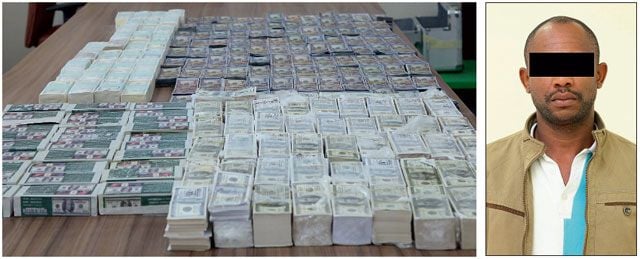
Sources:
• http://www.emirates247.com/crime/local/bid-to-sell-10-million-fake-bills-foiled-in-abu-dhabi-2015-04-13-1.587262
• https://en-maktoob.news.yahoo.com/abu-dhabi-police-seize-10million-fake-currency-072747420.html
• http://www.tradearabia.com/news/MISC_279689.html
7.
How much was counterfeited? $20 million
Where? Sharjah, United Arab Emirates (UAE)
When? April 20, 2015
Who? Dele Ogunde, Biyi (last name unknown), and a third unnamed suspect – all Yorbua from southwestern Nigeria
How? Ogunde, Biyi, and the third suspect were in the UAE on visas – two got to the UAE using a visit visa and the other got to the UAE using a residency visa that was given to him through a commercial shop.They concocted a get-rich scheme to gather a large amount of real currency and in order to eventually leave the UAE. The three convinced people - mostly businessmen - that they were could double their money and become rich beyond their wildest dreams if they handed over the money they wanted to double to the three. The three made sure to return double the amount of money, except the money returned was all counterfeit.As more and more people caught onto their scheme and contacted police to complain, the Criminal Investigation Department (CID) organized a raid of the apartment in which the three resided. The three Nigerians were caught red-handed with $20 million in counterfeit cash, which they initially denied belonged to them and claimed that they were simply holding onto the fake money for someone else; the suspects later confessed that the cash was theirs. Along with counterfeit US currency, counterfeit euros and dirhams (currency used in the UAE) were uncovered during the raid.
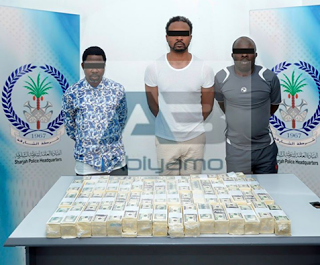
Sources:
• http://gulfnews.com/news/uae/crime/sharjah-police-seize-20m-fake-currency-1.1496157
• http://ngpeeps.blogspot.com/2015/05/three-nigerians-caught-with-20m-fake.html
• http://www.khaleejtimes.com/nation/crime/money-doubling-gang-arrested-in-sharjah-with-fake-20m-bills
8.
How much was counterfeited? $20 million
Where? Ras al Khaimah, United Arab Emirates (UAE)
When? January 1, 2015
Who? A man, 19; a woman, 21; and her father – their names were not released, the only other information given about their identities was that they were from Asia
How? After receiving a tip that a couple had a suspicious amount of cash at a café, a team of police were sent to the location where they discovered that the cash the couple had - $10 million in total - was counterfeit and arrested them. After searching the couple’s home, another $10 million in counterfeit bills was uncovered.During their interrogation, the couple revealed that the woman’s father was also involved with the counterfeit money; he was subsequently arrested as well. It was not released how the three suspects either manufactured or obtained the $20 million in counterfeit money.
Sources:
• http://article.wn.com/view/2015/01/01/Gang_arrested_with_20_million_in_counterfeit_bills/
• http://www.thenational.ae/uae/gang-arrested-with-20-million-in-counterfeit-bills
9.
How much was counterfeited? $86 million
Where? Israel; Cherry Hill, New Jersey; Alexandria, Virginia
When? January 20, 2015 & September 18, 2015
Who? Itzhak Loz, 46, and Ronen Fakiro, 45, both of Rishon Le Zion, Israel, along with 11 others
How? It all started back in 1999, when the US Secret Service first got wind of a counterfeit $100 bill that was near perfect – so close to perfect that the bill is still considered legendary in law enforcement circles. For the next 3 years, until 2012, law enforcement agents did not manage to learn much about these almost perfect $100 bills that, when spent, did not raise suspicions until the bill reached a bank or the Federal Reserve – and by then, it was basically impossible to trace the bill back to its transactional origin.The US Secret Service caught a lucky break in May 2012 when 4 of the counterfeit $100 bills were discovered shortly after being spent at a Loan Max, a title loan shop, in Northern Virginia; because the bills were spent at a title loan shop -which, by the nature of their business, kept, meticulous records -they could easily be traced back to the person who spent them. By turning the person who used the bill into an informant, federal agents spent the next two years building a case using round-the-clock surveillance and wiretaps, which eventually led them to a counterfeiting ring led by Loz and Fakiro as well as printing plants in Israel, which is not within the jurisdiction of the US Secret Service.The Secret Service made their move in May 2014, when the counterfeiters opened up a base of operations in a warehouse in Cherry Hill, New Jersey; federal agents actually witnessed a tractor trailer unload a printing press that was shipped in from Israel into the warehouse. During their raid of the New Jersey warehouse, federal agents seized 2 offset printing presses, $2.56 million in counterfeit US bills, and over $200,000 in genuine US currency and luxury items. Authorities discovered that Loz and Fakiro had come close to perfecting a counterfeit version of the new 2013 $100 bill, with its additional security features. On the day of the New Jersey warehouse raid, federal agents also simultaneously served search warrants in New York, New Jersey, Pennsylvania, Georgia, and Florida, for additional locations and suspects that were believed to be connected to the counterfeiting ring. Loz and Fakiro were arrested in Jamica, New York, not their New Jersey warehouse.During the course of investigation into the counterfeiting ring, it was discovered that beginning in 2004, Loz and Fakiro employed the Bangiyev brothers – Arkadiy, 37, and Eduard, 39 – with being responsible for distributing the counterfeit $100 bills.Loz, Fakiro, and the Bangiyev brothers, were indicted on August 7, 2014. On January 20, 2015, they all pleaded guilty to Racketerring Influenced and Corrupt Organizations (RICO) conspiracy and multiple counts of counterfeiting US currency offenses; the 7 other suspects involved all had either already or subsequently pleaded guilty as well. On September 18, 2015, Loz was sentenced to 180 months in prison, and is set to be released on June 22, 2027. Fakiro and the Bangiyev brothers were sentenced on September 21, 2015; Fakiro is set to be released on July 2, 2020, Arkadiy Bangiyev is set to be released on March 31, 2022, and Eduard Bangiyev is set to be released on May 16, 2021. Other members of the counterfeiting ring were sentenced anywhere from 12 months to 36 months.According the Department of Justice release, the counterfeiters allegedly manufactured over $86 million in counterfeit bills since 1999. At the peak of their operations (before establishing their New Jersey location), the counterfeiting ring smuggled in an estimated $3 million in counterfeit bills every 3 months into the United States. After the counterfeiters were arrested in June 2014, the counterfeit $100 bill was nicknamed the “Russian-Israeli note” because the Israelis who were arrested predominately spoke Russian.
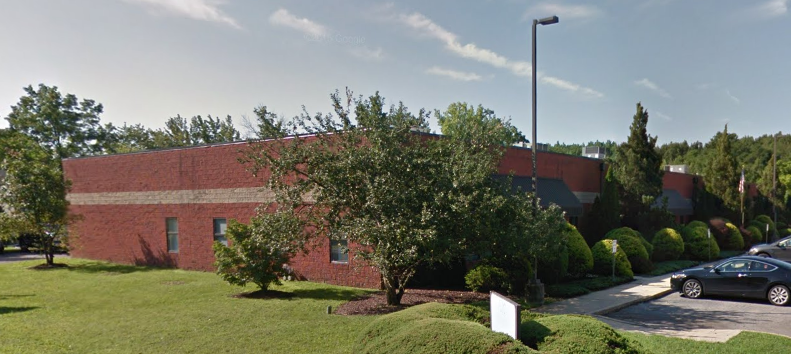
Sources:
• http://sputniknews.com/us/20150207/1017919214.html
• http://qz.com/247865/the-us-says-it-finally-busted-the-gang-behind-the-most-convincing-counterfeit-dollars-in-the-world/
• http://www.justice.gov/usao-edva/pr/four-men-plead-guilty-international-counterfeit-currency-conspiracy
• http://www.justice.gov/opa/pr/leader-international-counterfeit-currency-ring-sentenced-15-years-prison
10.
How much was counterfeited? $30,000-$50,000
Where? Kingsport, Tennessee
When? July 12, 2015
Who? Pamela Downs, 45, of Kingsport, Tennessee
How? This story didn’t make the list because of the amount of money that was counterfeited; rather, it made the list because it is so comically unbelievable. In an epitome of “don’t believe everything you read on the Internet”, Downs took “Thanks, Obama” to a new level by blaming her production of counterfeit money on Barack Obama based on what she had read on the Internet.Downs was arrested when police were tipped off that a $5 bill that she had used at a grocer was obviously fake; she claimed she had received the $5 bill as change from a previous transaction at a gas station. After looking through her purse, a counterfeit $100 bill was discovered along with a receipt for a new printer and copy paper. Police searched her apartment as well where they uncovered $30,000-$50,000 worth of counterfeit bills.During her interrogation, Downs claimed that she was allowed to print her own money because she read on the Internet that Obama made a new law that allowed people on fixed incomes to produce their own money. Unfortunately for Downs, the article she had read was a 2009 article titled “Obama Wants Citizens to Print Their Own Money” by The Skunk, which is a news parody website, much like the Onion. The Skunk’s slogan is “Tasteless American Satire For The Ill-Informed”.
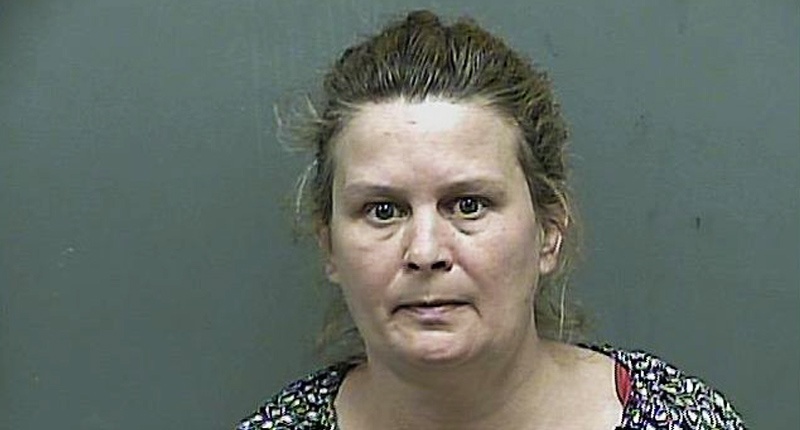
Sources:
• http://www.rawstory.com/2015/07/tennessee-woman-arrested-for-printing-own-money-after-reading-online-obama-had-made-it-legal/
• http://www.huffingtonpost.com/2015/07/15/pamela-downs_n_7797120.html
• http://time.com/3958348/tennessee-counterfeit-money-cash/
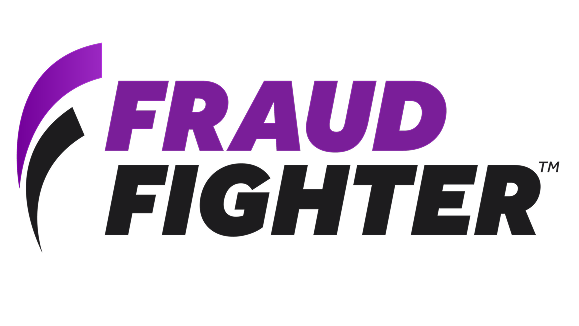




.png)
